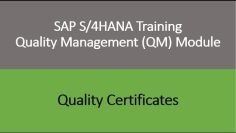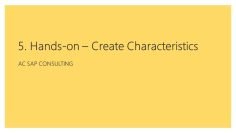This video provides a comprehensive understanding of parallel accounting, ledger, and account-based approaches used in SAP S/4HANA Financial Accounting (FI). Here are the key points:
- Parallel Accounting: The video explains that in parallel accounting, two different sets of accounts are maintained based on different types of accounting principles used by a company. For example, a company’s head office in the US may report on the basis of US GAAP, while a subsidiary in Pakistan may use IFRS.
- Ledger Approach vs Account Approach: There are two types of approaches used for parallel accounting: the ledger approach and the accounts approach. In the ledger approach, two different ledgers are used for different accounting principles. In the accounts approach, two different General Ledger (GL) accounts are posted on the basis of different accounting principles. The video mentions that SAP recommends the ledger approach.
- Defining Ledgers: The video demonstrates how to define leading and non-leading ledgers in the system. The leading ledger is defined by default as 0L. The presenter creates a non-leading ledger named ‘DT’ for testing purposes.
- Assigning Accounting Principles to Ledgers: The presenter assigns different accounting principles to the leading and non-leading ledgers. The leading ledger is assigned the IFRS accounting principle, while the non-leading ledger is assigned a testing accounting principle.
- Multiple Currencies: The video explains that multiple currencies can be maintained in the ledger.
- Company Code Settings: The presenter shows how to define the accounting principle for a company code. For the company code ‘HA01’, the IFRS accounting principle is used.
- Account-Based Approach Settings: For the account-based approach, the presenter checks the option ‘Parallel Accounting Using GL Accounts’ in the company code settings. This allows two different accounting principles to be assigned to one ledger.





































